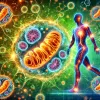Alzheimer’s disease (AD) is a devastating form of neurocognitive decline. Too many people falsely assume dementia is an inevitable part of the aging process. While aging plays a role—one reason dementia was less common in the past was that we didn't live as long—but it is by no means a given. There are modifiable risk factors.
But some context first. AD is not the only form of dementia, even if it is the most prevalent. In general, dementia means that a person has diminished short-term memory capacity, facial identification issues, difficulty processing or encoding new memories, depression, agitation, behavioral changes, and, in the end, difficulty with activities of daily living.
Eighty percent of us will die from cardiovascular disease, stroke, cancer, or a progressive neurodegenerative issue such as AD. But if you speak to your friends, it is clear that the prospect of developing dementia scares them the most. Dementia is so prevalent that almost everyone knows someone close to them who is suffering from AD or other advanced forms of neurocognitive decline.
The actual number of people who die from Alzheimer’s isn’t known. That’s because people with Alzheimer’s die from something that was caused by their AD, but AD was not listed as their cause of death. For example, a person with severe AD may not complain of pain, yet there is an obstruction in their intestine. The blockage might ultimately lead to their demise, but it was the AD that prevented them from communicating promptly that they were in pain.
Alzheimer’s disease is pathologically characterized by a collection of waste products (Beta-amyloid) and sticky proteins in the brain. These proteins are either over-produced or not cleared by the brain’s microglial trash-collecting system. The resulting tangles of amyloid and protein start to clog critical pathways and ultimately lead to the destruction of nerve cells and atrophy of portions of the brain itself.
There are other physiological processes at play here, too. There is strong evidence that the status of our blood vessels, how we process energy needs, insulin resistance, and metabolic diseases contribute to the development of dementia, too.

For decades, research has focused on, and continues to focus on, eliminating beta-amyloid and these sticky proteins. Unfortunately, 99.5% of all medications produced to treat AD in its advanced form have failed. Is it because these researchers focus too much of their effort on the end result and not the actual cause(s) of AD? Probably... more on that later.
Causes of dementia
In its most basic form, the causes of AD can be due to vascular (poor condition, diabetes), genetic, environmental (air pollution, toxins), lifestyle (diet, lack of exercise), and hormonal (more common in perimenopausal women) issues. The potential contributors to the onset of AD are numerous. Some of the causes of AD are under our control. Other causes are not. There are familial or genetic forms of AD. There are two genes (presenilin 1 and 2) that a tiny percentage of people have. Carriers of Presenilin 1 or 2 may develop AD at a very young age.
In addition, we all have genes that code for a protein called ApoE. However, there are different variants of the ApoE gene. The protein ApoE is involved in how our body handles cholesterol and lipids. Because there are different variants of the ApoE protein, there are different ApoE phenotypes. A phenotype represents how your DNA code expresses itself in you as an individual. Specific ApoE protein types carry a higher risk of developing Alzheimer’s, atherosclerosis, coronary artery disease, and stroke. Specific ApoE variants raise your risk of developing AD, but some of those risks are modifiable. More specifically, the ApoE a4 allele is associated with a high risk of developing dementia.
As we dive deeper here for our paid subscribers, we will learn more about the conditions that have a strong association with the development of AD, as well as the everyday choices/actions necessary to significantly improve our chances of avoiding AD and cognitive decline.
Read the full article
Sign up now to read the full article and get access to all articles for paying subscribers only.





